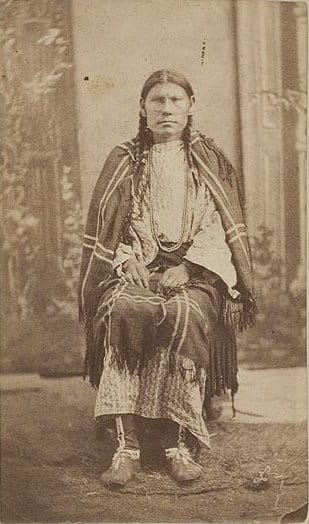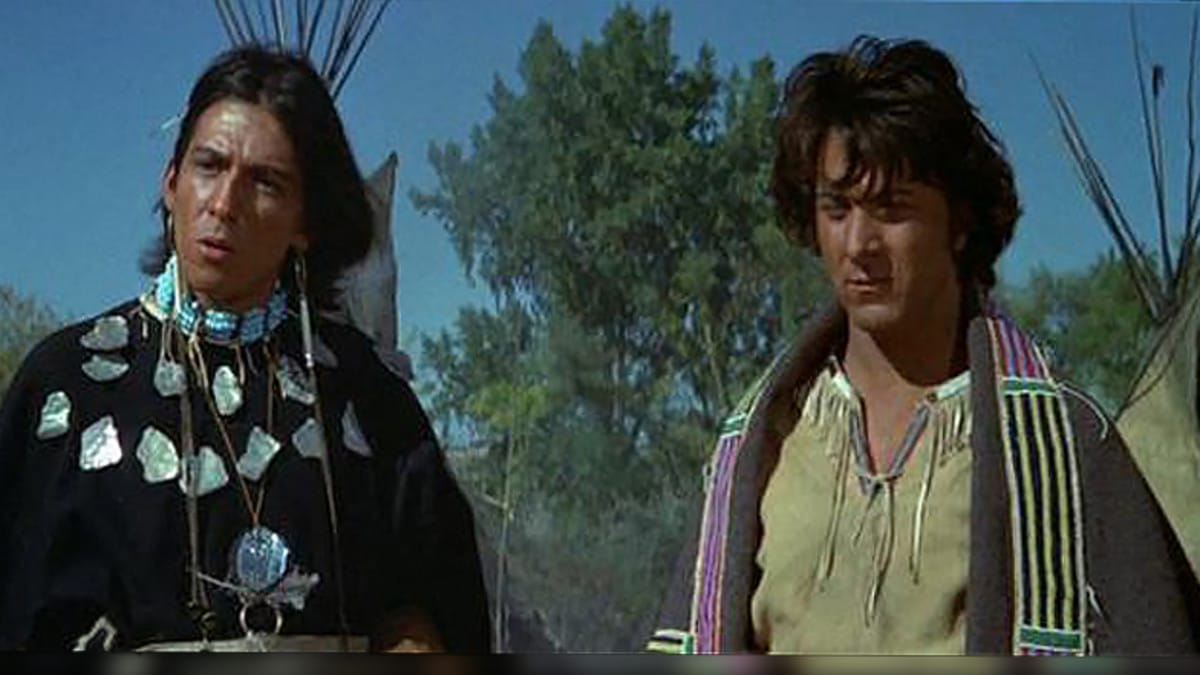On this Transgender Day of Remembrance, some of the names I'm holding in my heart are:
- Wolf Walking Alone
- Buffalo Wallow
- Hiding Shield Under His Robe
- Big Mule
- Bridge
- Pipe / Pipe Woman
- Good Road / Good Road Woman
These are the names of the first transgender people I know of to have lived in what is now called Colorado. Back then Colorado was an idea, a colonial aspiration. It was Arapaho and Cheyenne land. Of course even calling it that doesn't quite line up with the relationship of land those nations had to the land, but I digress.
The seven individuals listed above were a group of Cheyenne doctors and spiritual leaders whose genders were he'emaneh (hemaneh, he'emaneo), which means"born male but has the heart and soul of a woman."

In the 1800s, Wolf Walking Alone, Buffalo Wallow, Hiding Shield Under His Robe, Big Mule and Bridge were members of the Oo'kóhta'oná / Ohktounna (Bare Legged / Protruding Jaw Band) of the Southern Cheyenne.
Before colonization, being he'emaneh was special; revered and respected.
Anthropologist E. Adamson Hoebel noted that,
"They are all doctors and highly respected. War parties like to have Halfmen-halfwomen along, not only for their medical skill, but because they are socially graceful and entertaining.
George Bent explained to anthropologist George Bird Grinnell,
They were men, but had taken up the ways of women. Their voices sounded between the voice of a man and that of a woman. They were very popular and especial (sic) favorites of young people, those who were married as well as those young men and young women who were not married, for they were noted matchmakers.
If the Cheyenne were successful in battle and suffered no casualties, the he'emaneh would prepare a huge bonfire for a Scalp Dance, then played a unique role in the dance only performed by them. They had similar exclusive leadership roles in the Sweetheart Dance, Round Dance, Slippery Dance and Galloping Buffalo Bull Dance.
In day to day life he'emaneh worked alongside women, many in families as an additional wife. They were accomplished in hide tanning, lodge making, sewing and embroidery with quills and beads. In fact, they were so successful that they generally owned the largest, finest tipis.
I haven't been able to find hardly anything about each individual. Knowing their roles in the tribe, their skills as healers and match makers were crucial in the survival and resistance of the Cheyenne as they fought the intense colonization waged against them.
The five in the Oo'kóhta'oná band likely died in the Great Cholera Epidemic of 1849 which tragically killed almost the entire band.
Pipe / Pipe-woman of the Northern Cheyenne, lived until 1868, the year the tribe signed the Treaty of Laramie, won through fierce successful battle against George Custer. The US government would go on to blatantly violate the treaty shortly thereafter.
The one fact about Pipe I learned was utterly fantastic. With two others, they stole forty mules from Fort C.F. Smith, in the summer of 1867.
Good Road / Good Road Woman (also known as Glad Road) of the Southern Cheyenne, lived until 1879. (Grinnel, 1910: 307) They may very well have been present for the Sand Creek Massacre, dressing people's wounds and counseling the survivors afterwards,
They might have joined the Dog Soldiers and their war party afterwards on their revenge spree that ransacked settler outposts and forts. Perhaps instead they were with Black Kettle and his followers who maintained a nonviolent stance, only to be punished for the Dog Soldier's separate actions by the infamous George Custer.
After years of war with the US government, the Cheyenne were forced onto reservations where the he'emaneh were persecuted. The violent imposition of Christianity and its cisheteropatriarchal belief system erased the he'emaneh as far as I can tell, though I like to imagine Cheyenne gender expansive folks resisting and subversively being true to themselves.
In the 1970 film Little Big Man, Robert Little Star starred as a he'emaneh named Little Horse. The portrayal of Little Horse is complicated; on one hand veering into the territory of transphobia harmfully used as comedic relief, Little Horse is also accurately respected by the the tribe and a genuine friend of the protagonist JackCrabb. It is one of the earliest moments of a Native American character played by an indigenous actor, though Robert Little Star is not he'emaneh himself.

The he'emaneh is regaining visibility within the larger two spirit movement. By remembering the early he'emaneh may we take strength and inspiration from their transcendence of the gender binary to contribute and lead uniquely as artists, healers, shamans, counselors, wives and more.
Sources
- Coup and Scalp among the Plains Indians, George Bird Grinnell American Anthropologist, New Series, Vol. 12, No. 2 (Apr. - Jun., 1910), pp. 307-310
- The Cheyennes, E. Adamson Hoebel 1960 p. 77
- An Indigenous perspective on “Disclosure: Trans lives on screen”
- A trans writer’s talk was banned over a drag law. So she’ll speak here instead
He'emaneh - The First Known Transgender People in Colorado
The first transgender people in Colorado were Cheyenne two spirit folks, he'emaneh, revered as healers, shamans and match makers.